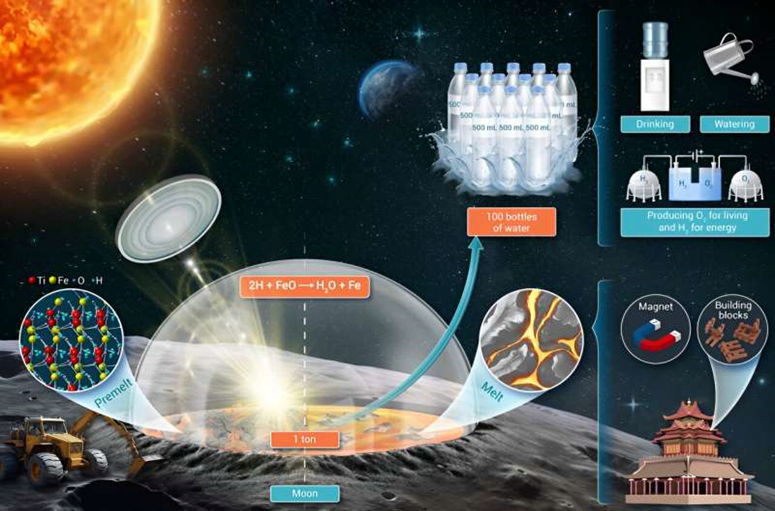China.. Scientists discover a way to produce water from “moon dust”

Chinese scientists have discovered a "completely new way" to produce large quantities of water using lunar soil brought back by a mission in 2020, China Central Television announced Thursday.
He said that in that year, the Chinese Chang'e-5 mission represented the first time that humans had obtained samples from the Moon in 44 years, and researchers from the state-run Chinese Academy of Sciences discovered that the minerals found in the "lunar soil." It contains large amounts of hydrogen, which reacts with other elements when heated to very high temperatures, producing water vapor.
He added, "After 3 years of careful research and repeated verification, scientists have discovered a completely new way to use lunar soil to produce large quantities of water, and it is expected to provide an important design basis for building scientific research stations on the moon, and space stations in the future."

This discovery may have an important impact on China's decades-long project to build a permanent site on the moon in the midst of a race between the United States and China to find and extract resources on the moon.
The head of the US National Aeronautics and Space Administration (NASA), Bill Nelson, has repeatedly warned of the rapid progress in the Chinese space program and the possibility of Beijing dominating most of the resource-rich sites on the moon.
China TV explained that using the new method and one ton of lunar soil, it is possible to produce between 51 and 76 kilograms of water, which is more than 100 half-liter water bottles, or the equivalent of 50 people drinking water per day.

China hopes that recent and future missions to the moon will lay the foundation for building the International Lunar Research Station, an initiative that Russia co-leads.
The Chinese Space Agency has set 2035 as the date for building a “base station” on the south pole of the moon, then adding a space station orbiting the moon by 2045.
The announcement of the discovery comes at a time when Chinese scientists are already conducting experiments on samples from the moon, brought by the Chang'e-6 mission last June.
The Chang'e-5 mission extracted samples from the side near the Moon, while the Chang'e-6 mission extracted soil from the side that is always far from Earth.
The importance of lunar water goes beyond making permanent human presence possible. NASA's Nelson told NBR Radio in May that water on the moon could be used to produce hydrogen rocket fuel, spurring more space exploration to Mars and other destinations.
Source: websites

